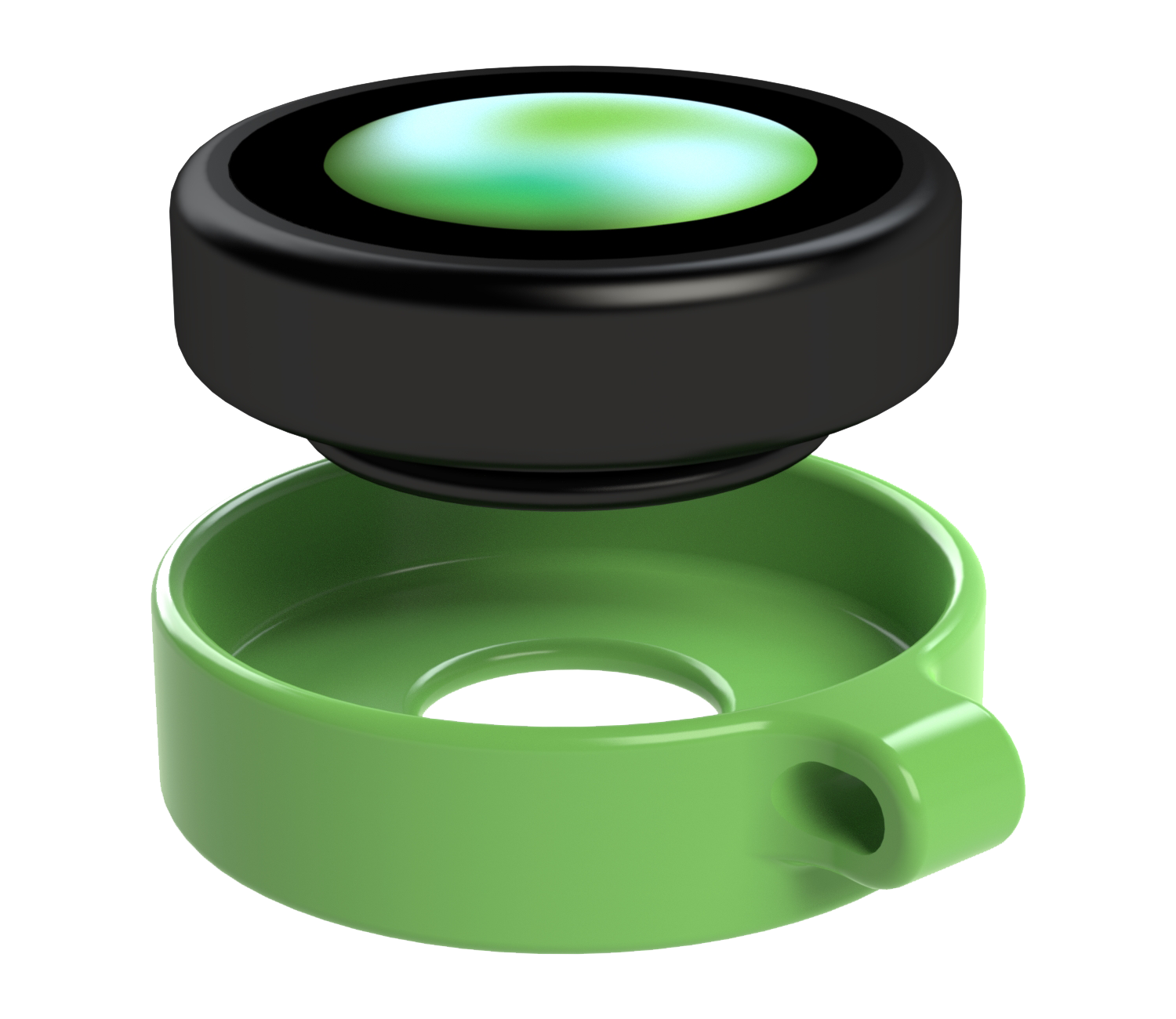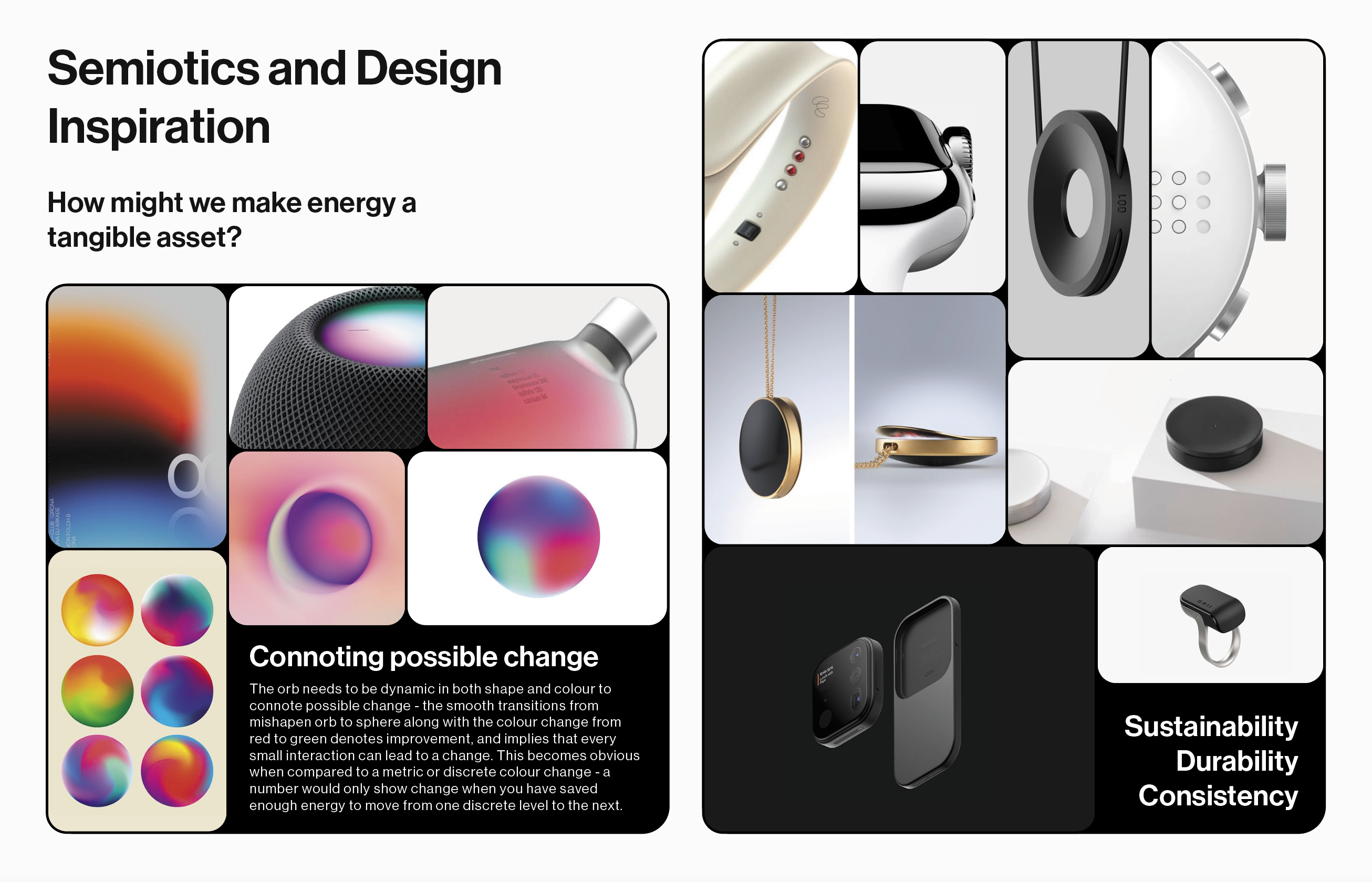

The aim of this project was to create an IoT touchpoint in the context of a future scenario where all devices are interconnected, using Industrial Design skills to make the product desirable for the user and as effective as possible for its task. After some research, I decided to tackle energy saving within the home, and began to think of a way to change the way many people view the lack of effectiveness of changing small aspects of their daily lives in order to save energy. I began to develop a 'How might we' question to lead the project, in order to set an aim for the final outcome - the iterations of the question are below. The third embodies the goal of this project.

How might we reduce the energy consumption of our every day lives?
How might we make energy a tangible asset?
How might we make energy a tangible asset to encourage personal responsibility in energy reduction?
The goal of making energy a tangible asset was embodied as Eos - a result of user journey research, ideation, low fidelity prototyping and semiotics analysis. The design solution included a physical wearable (Eos), a simple and intuitive UI for tracking the environmental impact of wearing Eos and a system of data transfer and analysis. These aspects are displayed below, and in more detail in the PDF.



